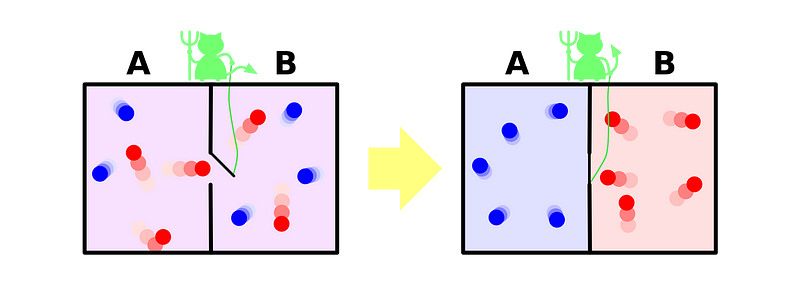Demons in Science: A Deep Dive into Thought Experiments
Written on
Chapter 1: The Utility of Demons in Thought Experiments
Imagining demons can serve as a powerful mechanism in intellectual explorations. Thought experiments provide scientists and philosophers a means to investigate hypothetical situations, posing the profound question: what if? Although the practice of thought experimentation has roots in ancient history, the actual term emerged in the early 19th century through the contributions of Hans Christian Ørsted, a Danish physicist and chemist.
These mental exercises can predict the results of practical experiments or envision scenarios that are currently unattainable. Such hypothetical worlds might involve technologies or methodologies that do not yet exist or may be designed to challenge the limitations of physical laws. In these cases, we often require an agent capable of performing actions beyond normal human capability.
Thus, we introduce demons—potent entities that can provoke the very foundations of existence. Unlike their portrayals in popular culture, these demons are not inherently malevolent; rather, they sometimes flirt with moral boundaries.
Section 1.1: The Trifecta of Famous Demons
In the realms of science and philosophy, three demons have attained notoriety, captivating the imaginations of many.
Subsection 1.1.1: Descartes’ Demon
The first of this trio is Descartes’ demon, conjured by the French philosopher René Descartes in the 17th century to examine the limits of skepticism. This demon has the power to create a complete illusion of the external world, manipulating every sense. A contemporary analogy is the "brain in a vat" thought experiment, wherein a brain receives sensory inputs just as if it were embodied.
Ultimately, this demon leads to Descartes' conclusion: "I think, therefore I am." Even if sensory perceptions can be questioned, something must be doing the doubting.
Section 1.2: Laplace’s Demon
The second demon, introduced by Pierre-Simon Laplace more than a century later, allows for the articulation of scientific determinism. This concept posits that every event is determined by the state of particles and the forces acting upon them. Laplace's demon, or "an intelligence" as he preferred to call it, possesses the foresight to know every decision we will make, rendering free will an illusion under this paradigm.
In Laplace’s view, knowledge of all particle states and forces would grant the ability to predict the future with perfect clarity.
Chapter 2: The Tinkerer – Maxwell’s Demon
The third member of the demonic trio, Maxwell’s demon, emerged fifty years later. Scottish physicist James Clerk Maxwell envisioned this entity to challenge the second law of thermodynamics. He proposed an experiment involving two boxes of gas—one hot and one cold—separated by a shutter. According to thermodynamic principles, the temperatures would eventually equalize.
However, if Maxwell’s demon could selectively open the shutter, allowing only fast-moving molecules to pass in one direction and slow-moving ones in the other, the temperature difference would actually increase.

These three demons have long been a source of fascination, and one can only imagine the discussions they would have among themselves.
LD: “I foresee everything you will do, so there's no point in trying.”
MD scoffs: “Oh really? Watch me defy the laws of physics.”
DD sighs: “You’re both amusing; none of this is real.”
Bonus Section: The Darwinian Demon
While the triumvirate remains influential, newer concepts are emerging, such as the Darwinian demon, introduced by biologist Richard Law over fifty years ago. This demon explores a world without biological constraints on evolution, representing an organism that can continuously maximize its fitness without aging, reproducing prolifically, and always having access to resources.
The absence of such demons—except in theoretical discussions—has spurred significant research into the limitations of evolution. Though these demons exist only in our minds, they have facilitated the development of hypotheses, refined inquiries, and pushed the boundaries of human understanding.
All hail the demons!
Chapter 3: Scientific Reflection through Thought
In this video, Jimena Canales discusses the intricate relationship between scientists and their intellectual 'demons', offering insights into the challenges and inspirations that drive scientific thought.